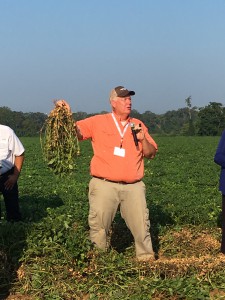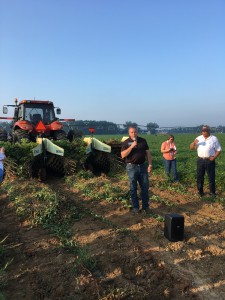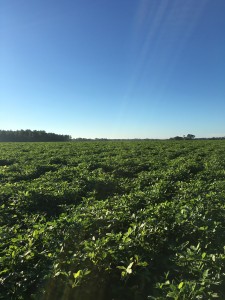After leaving the Georgia Seed Development Facility, tour attendees traveled south to McCleskey Mills’ peanut buying point in Smithville. Here, tour attendees learned all about the process growers go through when they bring their peanuts to a buying point. Buying points can be owned by farmers, co-ops or agribusinesses. This particular buying point is owned by McCleskey Mills/Olam Edible Nuts. Joe West, senior vice president of U.S. shelling for Olam Edible Nuts, and his staff welcomed tour attendees and gave them an overview of peanut buying point process, which is outlined below.
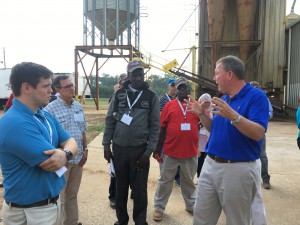
Joe West, senior vice president of U.S. Shelling for Olam Edible Nuts, explains buying point operations to attendees.
- When peanuts arrive to the buying point, moisture levels are checked.
- If the moisture level is not 10.49 percent or less, the peanuts are placed in semis with dryers attached. The dryers blow air 15 degrees above ambient temperature to allow the peanuts to reach the appropriate moisture level. This process could take up to 15 hours.
- After the peanuts are dried, they are cleaned if needed. The peanuts must have 6.49 percent or less of foreign material to be considered cleaned. Foreign material includes items such as sticks, glass, rocks, etc.
- Once the peanuts are cleaned, they are inspected by Georgia Federal State Inspection Service.
- Finally, the peanuts are either shipped to a sheller or transported to a warehouse for storage until they are needed.
This Smithville buying point location handles approximately 35,000 farmer stock tons of peanuts each year. During harvest season, they will handle 1,200-1,500 tons per day.
McCleskey Mills, Inc. was founded McCleskey Cotton Company in Americus, Georgia, in 1929. The company’s structure was created in June of 1974, when Thomas J. Chandler acquired McCleskey Mills and operated in Americus until 1983 when the shelling operation was moved to a new facility 12 miles south to Smithville. Upon moving to Smithville, McCleskey Mills tripled its capacity to produce a high quality product for an ever-changing buyer demand. In 2014, Olam International announced the purchase of McCleskey Mills and the two companies joined forces to better serve growers and manufacturers. McCleskey Mills/Olam provides quality raw, shelled peanuts to peanut butter manufacturers, candy and confectionery plants and salted nut roasters throughout the United States and the world. Today, McCleskey Mills/Olam offers Georgia, Florida and Alabama a competitive market with support services and its manufacturer customers with the industry’s highest quality shelled peanuts in the either bags, boxes, totes or bulk containers. To learn more, visit www.mccleskeymills.com.

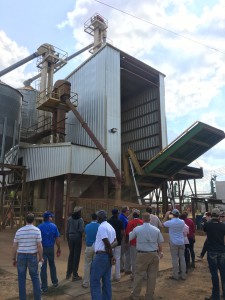
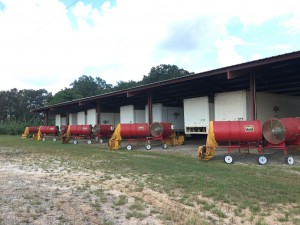

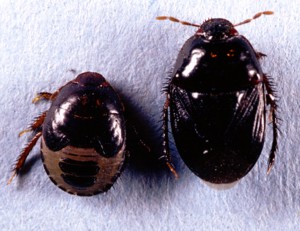


![IMG_9750[1]](http://georgiapeanuttour.com/wp-content/uploads/2017/09/IMG_97501-300x225.jpg)
